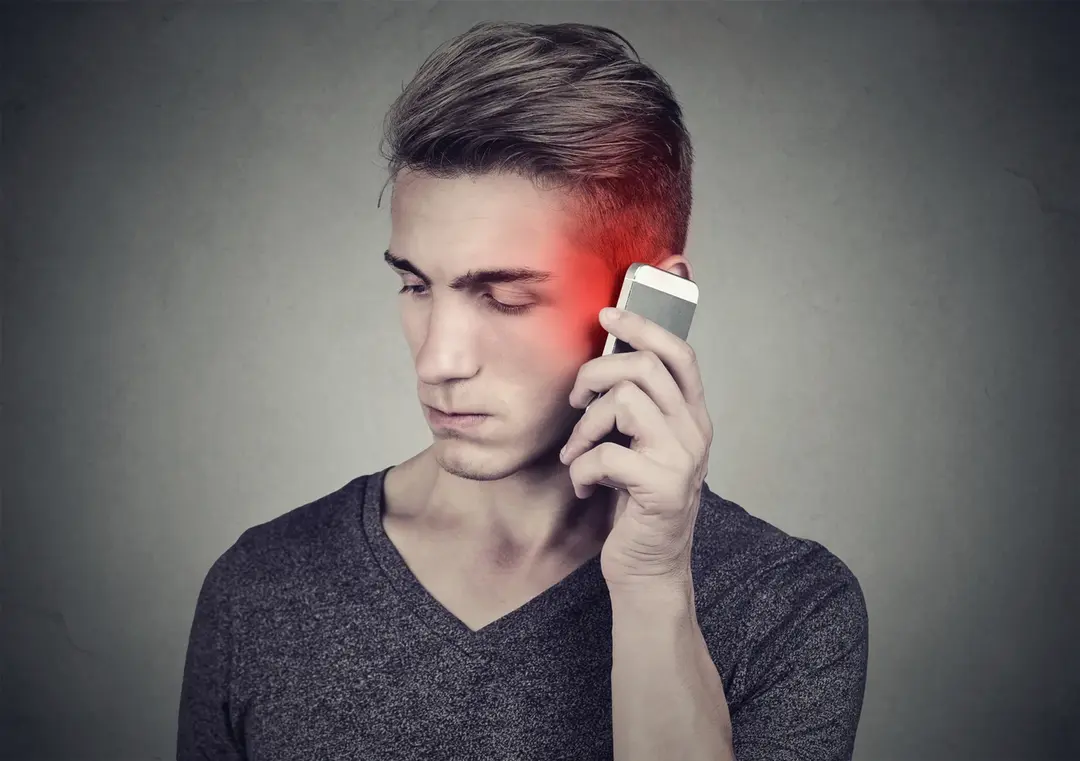With the rise of mobile technology, smartphones have become an integral part of our daily lives. From social networking to business, cellphones help us stay connected. However, the widespread use of mobile phones has also raised concerns about potential health risks, particularly the risk of cancer. This article explores the scientific evidence, public concerns, and the stance of health authorities on whether cellphones pose a cancer risk.
The Growing Concern
Cellphones have become ubiquitous, with more than 7.3 billion active mobile phones globally. As these devices become increasingly powerful and essential, concerns about their safety, particularly in relation to cancer, have gained traction. The primary concern stems from the emission of radiofrequency radiation (RF radiation) from mobile phones, which can be absorbed by tissues in close proximity to the phone, such as the brain.
The question remains: Are cellphones a risk for cancer? Let’s examine the scientific studies, the nature of radiation from cellphones, and the findings of health authorities around the world.
Understanding Cellphone Radiation
1. What is RF Radiation?
Cellphones emit non-ionizing radiation, a type of RF radiation. Unlike ionizing radiation, which comes from sources like X-rays and nuclear radiation, non-ionizing radiation doesn’t carry enough energy to damage DNA directly or ionize atoms.
Non-ionizing radiation is generally considered less harmful than ionizing radiation. However, concerns persist about whether long-term exposure to RF radiation, even at low levels, could increase the risk of cancer by causing thermal effects (heating tissues) or non-thermal biological changes.
2. How Does RF Radiation Interact With the Body?
When you use a cellphone, the device communicates with nearby cell towers using RF waves. These waves are absorbed into the body, particularly in areas closest to the phone, such as the head when making calls. The Specific Absorption Rate (SAR) is used to measure the rate at which the body absorbs RF energy from the phone. Most countries have strict SAR limits to ensure that phones sold in their markets do not exceed these limits.
The Science Behind the Concerns
1. Early Studies Linking Cellphones to Cancer
The possibility that cellphone radiation could cause cancer has been studied since mobile phones became widely available in the 1990s. The early studies mainly focused on the risk of brain tumors, particularly gliomas (a type of malignant brain tumor) and acoustic neuromas (benign tumors on the nerve connecting the ear to the brain).
One of the most prominent studies from the early 2000s, called the INTERPHONE study, examined cellphone use in 13 countries and did not find strong evidence of a link between cellphone use and brain tumors. However, the results were not conclusive, leading to ongoing research.
2. WHO Classification of RF Radiation
In 2011, the International Agency for Research on Cancer (IARC), a part of the World Health Organization (WHO), classified RF radiation as “possibly carcinogenic to humans” (Group 2B). This classification placed RF radiation in the same category as lead and coffee – indicating limited evidence of cancer risk in humans but insufficient to warrant a stronger warning.
This categorization was largely based on epidemiological studies that showed an association between heavy cellphone use and an increased risk of certain brain cancers. However, these studies also had significant limitations, including recall bias (relying on participants to accurately remember and report their cellphone use) and inconsistent findings across different populations.
3. Recent Research and Animal Studies
Several large-scale studies conducted more recently have offered mixed results. A key study conducted by the U.S. National Toxicology Program (NTP) in 2018 found that male rats exposed to high levels of RF radiation developed schwannomas, a rare type of tumor, in their hearts. Female rats, however, did not develop the same tumors, and the study did not find an increased risk of brain cancer in rats.
These findings raised concerns but did not provide definitive evidence. Importantly, the levels of radiation used in the study were far higher than those humans are typically exposed to when using cellphones, making it difficult to draw direct parallels.
Similarly, a 2018 study by the Ramazzini Institute in Italy also found an increased incidence of tumors in male rats exposed to RF radiation. However, critics of these studies argue that animal studies don’t always translate to human health risks, especially when the exposure levels in studies far exceed everyday human exposure.
Current Scientific Consensus
1. Findings from Health Authorities
As of now, major health organizations, including the American Cancer Society (ACS), the National Cancer Institute (NCI), and the World Health Organization (WHO), maintain that there is no conclusive evidence that cellphone use increases cancer risk. While some studies suggest a possible link between heavy cellphone use and cancer, particularly brain cancer, the evidence is inconsistent and not strong enough to warrant significant concern for the average user.
2. Long-term Use and Monitoring
The long-term effects of cellphone use, particularly in individuals who started using cellphones as children, are still being studied. Most epidemiological studies have not followed participants for more than 10-15 years, meaning the potential for long-term risks remains an open question. Additionally, as cellphone technology evolves, newer devices emit lower levels of RF radiation, further reducing potential risks.
Debunking Common Myths About Cellphones and Cancer
There are many myths surrounding cellphone use and cancer, often fueled by fear of new technology. Below, we will address some of the most common myths and provide scientific evidence to separate fact from fiction.
Myth 1: Holding Your Phone Too Close to Your Head Causes Cancer
Many people believe that holding a cellphone near the head during calls significantly increases cancer risk. However, studies have shown that RF radiation is quickly absorbed by superficial tissues, and the penetration of RF energy is very limited. Modern phones also emit much lower levels of radiation than older models.
Myth 2: 5G Networks Increase Cancer Risk
The rollout of 5G networks has sparked renewed concerns about cancer and RF radiation. However, 5G technology uses frequencies within the RF spectrum, similar to 4G and earlier networks, but often at much lower power levels. Current scientific evidence does not suggest that 5G poses any greater cancer risk than previous mobile networks.
Myth 3: Frequent Cellphone Use Will Inevitably Lead to Cancer
While some studies have suggested a correlation between heavy cellphone use and an increased risk of certain cancers, the overall evidence is inconclusive. Cancer development is influenced by multiple factors, including genetics, lifestyle, and environmental exposures, and there is no definitive proof that frequent cellphone use will lead to cancer.
Practical Tips to Reduce Exposure to RF Radiation
Even though the evidence of a link between cellphone use and cancer remains inconclusive, some people may still wish to take precautionary measures. Here are a few simple strategies to reduce RF radiation exposure:
- Use Speakerphone or Headphones: Keeping the phone away from your head reduces direct exposure to RF radiation. Using wired or wireless headphones, or simply using the speakerphone feature, can significantly decrease the amount of RF radiation absorbed by your head.
- Text Instead of Call: Texting requires less RF energy than a voice call. This limits your exposure, particularly during long conversations.
- Keep Your Phone Away When Not in Use: When not using your phone, store it away from your body. For example, avoid keeping it in your pocket or against your skin for prolonged periods.
- Limit Phone Use in Areas with Poor Reception: Phones emit more RF radiation when trying to connect to a weak signal. If possible, avoid using your phone in areas where the signal is low, such as in rural areas or underground locations.
- Use Airplane Mode: When not actively using your phone, switching to airplane mode will stop your phone from emitting RF radiation.
The Role of Technology in Reducing Risk
Over time, mobile phone manufacturers have developed ways to reduce RF radiation exposure. Modern smartphones are designed to emit lower levels of radiation than earlier models, thanks in part to more efficient antennas and adaptive power management that reduces energy use when signal strength is strong.
Additionally, many devices now offer software features that allow users to limit their RF exposure, such as automatic switching between Wi-Fi and mobile data to reduce radiation output. The SAR (Specific Absorption Rate) is also regulated in most countries, ensuring that phone models meet safety standards before being sold.
Ongoing Studies and the Unanswered Questions
Although current research points to a low likelihood of significant health risks from cellphone radiation, many unanswered questions remain. One key issue is the long-term use of mobile phones, especially as mobile phones have only been widespread for about two decades. Since cancer often takes many years to develop, further longitudinal studies are needed to track potential long-term health effects.
Additionally, researchers are continuing to study potential non-cancerous effects of cellphone use, such as impacts on fertility, sleep patterns, and mental health. These areas require more investigation to understand any broader health implications of cellphone radiation.
Conclusion: The Verdict on Cellphones and Cancer Risk
The question of whether cellphones are a risk for cancer remains a complex one. Despite decades of research, the evidence does not conclusively show that cellphone use increases the risk of cancer. The radiation emitted by cellphones is non-ionizing, meaning it lacks the energy to damage DNA directly, which is the primary mechanism through which cancer typically develops.
While some studies have raised concerns, particularly regarding long-term, heavy use of mobile phones, most health organizations, including the
WHO, maintain that cellphones are unlikely to pose a significant cancer risk to the general population. Nonetheless, taking simple precautions, like using hands-free options and limiting phone use in areas with poor reception, may help mitigate any potential risks until more definitive research emerges.
In the meantime, mobile phone users should stay informed about ongoing research and consider adopting safety practices that align with their comfort levels regarding RF exposure.





Such an informative post about Cell Phones.
Thank you <3